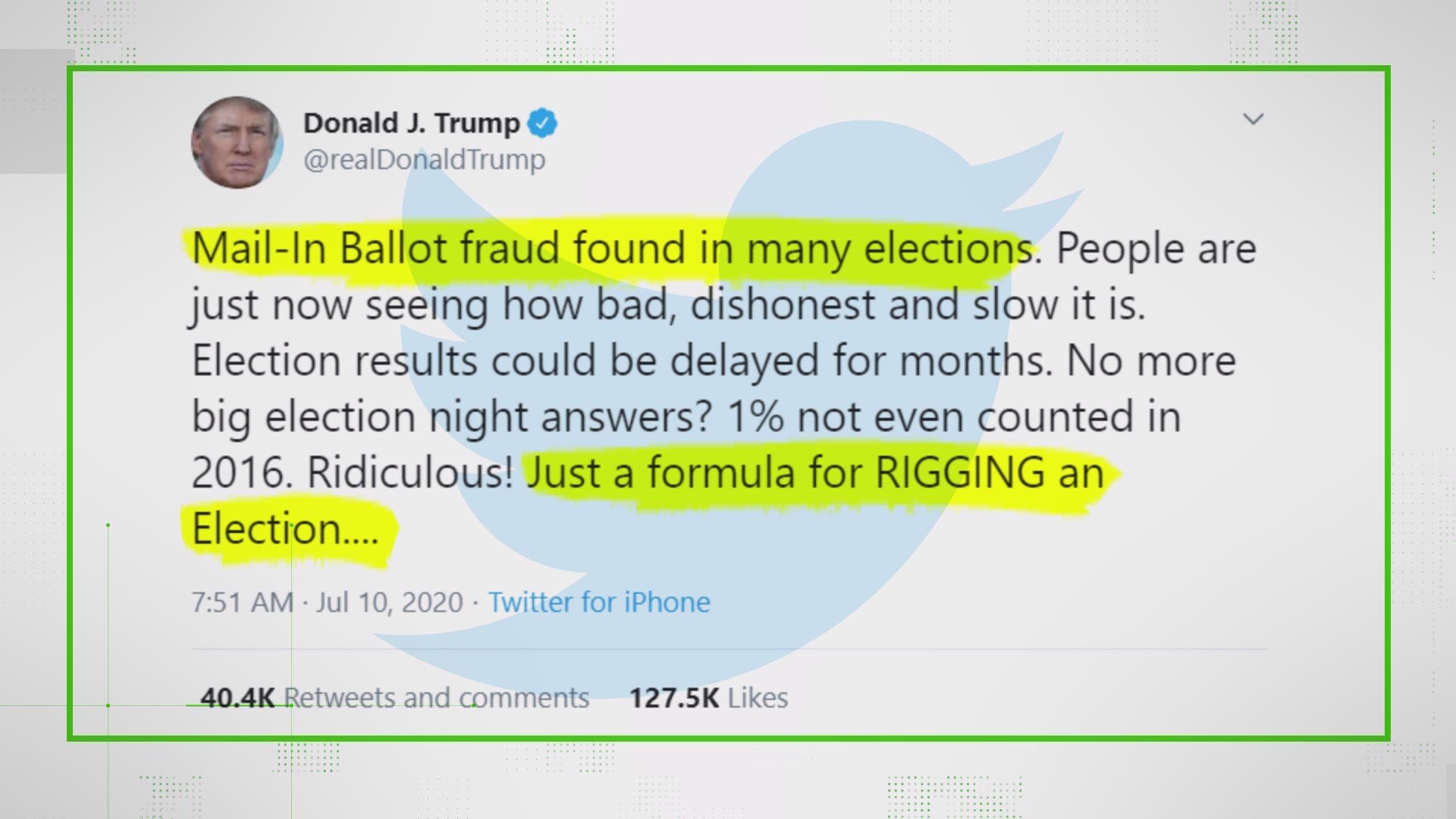There’s been some national debate over mail-in ballots and absentee ballots, and whether the terms are interchangeable or have different meanings.
All ballots that are sent through the mail share a few things in common: You have to be a registered voter to get one, you have to sign the ballot yourself and it has to be sent via the United States Postal Service.
President Trump has spoken out against mail-in ballots calling them a “formula for rigging an election.” But he’s also said that absentee ballots “are fine.” When asked for clarification on the difference, his administration has said that absentee ballots have to be requested through a different process.
So what exactly is the difference between the two ballots?
THE QUESTION:
What is the difference between mail-in ballots and absentee ballots?
THE ANSWER:
Yes, they are different, but only in one way.
Absentee ballots have to be requested by the voter to be mailed out. Mail-in ballots typically refer to states where the ballots are sent to all registered voters whether they requested one or not.
WHAT WE FOUND:
The National Conference of State Legislatures divides ballots that are sent by the mail into two categories: “Absentee” and “All-Mail Voting.”
Absentee ballots have to be requested along with a reason for voting absentee.
The following 29 states and Washington, D.C., let any registered voter request an absentee ballot for any reason: Alaska, Arizona, California, Florida, Georgia, Idaho, Illinois, Iowa, Kansas, Maine, Maryland, Michigan, Minnesota, Montana, Nebraska, Nevada, New Jersey, New Mexico, North Carolina, North Dakota, Ohio, Oklahoma, Pennsylvania, Rhode Island, South Dakota, Vermont, Virginia, Wisconsin and Wyoming.
Florida does require that registered voters request a ballot, but the state legally changed the name in 2016 from “absentee” to “vote-by-mail.”
In 16 states, you must have a reason or “excuse” to request and receive an absentee ballot. Qualifying reasons vary from state to state, but voters typically have to show why they cannot physically be at the polling location, like military service or out-of-state school.
Five states, Colorado, Hawaii, Oregon, Washington and Utah, don’t fall into either of these categories and are often called “mail-in” or “all-mail” voting states because all registered voters automatically receive a mail-in ballot.
In addition to these existing jurisdictions, Vermont, California, Nevada and the District of Columbia have decided to automatically send ballots this year. The Trump campaign is suing Nevada over the state legislature’s decision.
BOTTOM LINE:
Claims that absentee ballots are different than mail-in ballots are true. But there’s only one difference: how you actually get the ballot.
Regardless of their name -- all ballots are treated the same once they’re in the mail.
Something you'd like VERIFIED? Click here to submit your story idea.

